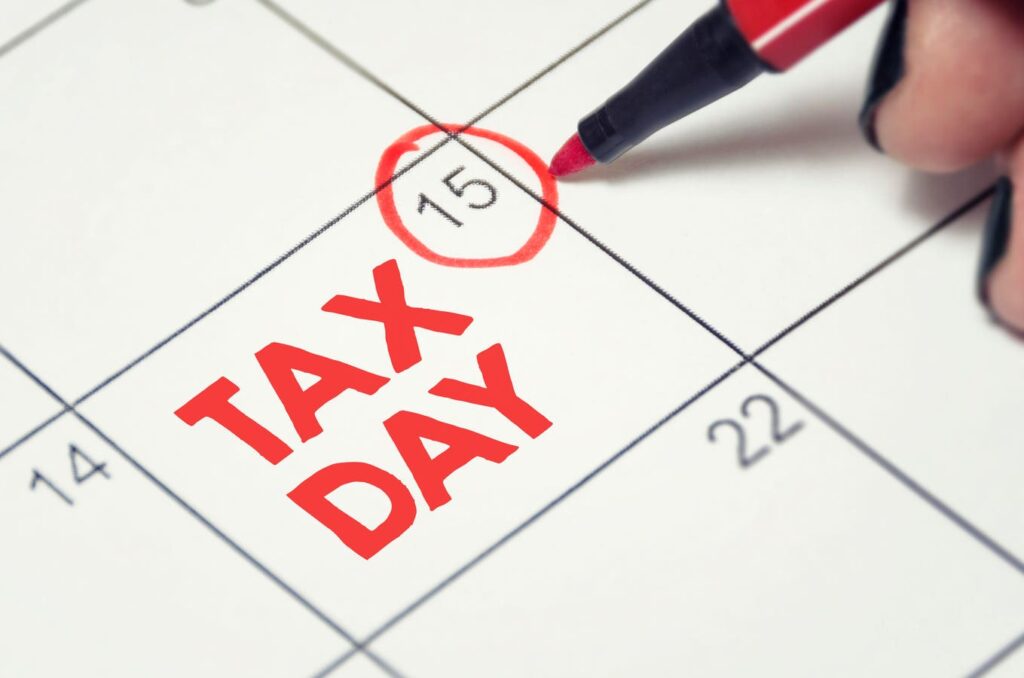April 15 is Tax Day for most of the country—some exceptions apply—but that hasn’t always been the case. The U.S. income tax system has changed quite a bit over the years—and that includes more than the due date for Form 1040.
History
With the advent of the Civil War in the late 1800s, the federal government found itself in need of cash. And as we know, wars are expensive. As a result, the first federal income tax in the U.S. was adopted as part of the Revenue Act of 1861. This tax was a flat 3% on annual income over $800 (just under $30,000 in today’s dollars). The following year, the flat tax was replaced by a graduated tax starting at 3% for income exceeding $600 (just under $19,000 in today’s dollars) and rising to 5% for incomes above $10,000 (over $315,000 in today’s dollars).
Revenues from this tax enabled the Union to keep its troops well-fed and well-supplied. By the time the Confederacy refined its own taxation system in 1864, it was too late to make a significant impact on the war effort. The war concluded in 1865, and the tax, which continued to increase as the conflict raged, generated nearly $310 million for the Treasury (over $6 billion in today’s dollars).
Post-Civil War, however, the nation was tired, and large segments of the population—especially in the South—were impoverished. Congress allowed the income tax to expire and focused, instead, on tariffs on products like tobacco and liquor.
However, as the nation struggled to recover from the Civil War—and seemed likely to be drawn into another conflict—the U.S. faced the worst economic depression in its brief history. Fueled by an overly exuberant market and bank failures, the Panic of 1893 compelled Congress once again, leading to the reinstitution of income taxes in 1894.
A year later, the U.S. Supreme Court, led by Chief Justice Melville Fuller, declared on a narrow vote of 5-4 that the law was unconstitutional. The case that led to the ruling, Pollock v. Farmers’ Loan and Trust Company, focused on a Massachusetts man, Charles Pollock, who sued Farmers’ Loan & Trust Company to prevent it from paying the tax on his stock shares. The Supreme Court ruled that income taxes on interest, dividends, and rents were direct taxes and were, therefore, unconstitutional because they violated the Constitutional provision that direct taxes be apportioned. That was a first for Congress—in the four cases focused on income tax previously presented to the Court, none were ever declared unconstitutional.
It was back to the drawing board for Congress.
Sixteenth Amendment
Income from wages and salaries had already been declared constitutional. But income taxes on property? Taxes on property were considered direct taxes, while indirect taxes were those on labor and services, raising a question. The only way to address the disparity was for Congress to amend the Constitution to permit taxing income from any source without apportionment.
An uneasy Congress, under President William H. Taft, passed a new income tax law in 1909. It would take four years to get the necessary number of states to ratify the amendment. By law, a proposed amendment becomes part of the Constitution as soon as it is ratified by three-fourths of the States. At the time, 36 states were required (38 of 50 states would be needed to ratify the Constitution today).
On February 3, 1913, Delaware became the 36th state to ratify the Sixteenth Amendment. On February 25, 1913, then-Secretary of State Philander Knox announced that the amendment had been ratified. Eventually, 42 of the 48 states would ratify the amendment (Alaska and Hawaii weren’t yet states, Florida and Pennsylvania refused to consider it, and Connecticut, Rhode Island, Utah, and Virginia voted no).
The amendment has become the stuff of conspiracy theories. The lengthy process of ratifying the Sixteenth Amendment resulted in suggestions that it was never truly ratified, making our federal income tax system appear like a hoax. The matter has been discussed, disputed, and litigated multiple times. The IRS has since issued Rev. Ruling 2005-19, deeming this argument a frivolous tax position; making such a claim can subject taxpayers to a penalty of up to $25,000.
The amendment imposed a federal income tax on individuals. The text was pretty simple: The Congress shall have power to lay and collect taxes on incomes, from whatever source derived, without apportionment among the several States, and without regard to any census or enumeration.
(If that sounds familiar, there was considerable discussion regarding the Sixteenth Amendment in a recent Supreme Court case centered on a provision of the 2017 Tax Cuts and Jobs Act that requires companies to pay tax on previously untaxed foreign profits. In that case, Moore v. United States, a divided Supreme Court determined that the tax on those foreign profits does not exceed Congress’s constitutional authority.)
The due date for the original tax return was initially March 1. You can see what the 1913 tax form looked like here:
Five years later, the deadline was moved to March 15.
Modern Times
The deadline changed again in 1955—this time to April 15 to give taxpayers and the IRS more time to prepare and process increasingly complex returns. Since then, innovations in technology and customer service have transformed the tax filing experience from hand-prepared paper forms to modern e-filing and online tools that make the process faster, more secure, and more accessible. In 2024, more than 144 million individual tax returns were filed with more than 96% submitted electronically.
Despite the changes, one thing remains constant: the importance of meeting the annual filing deadline. Most taxpayers must file by midnight tonight. Those who need more time can request an extension to October 15, though any taxes owed must be paid by April 15 to avoid penalties and interest.
Read the full article here

